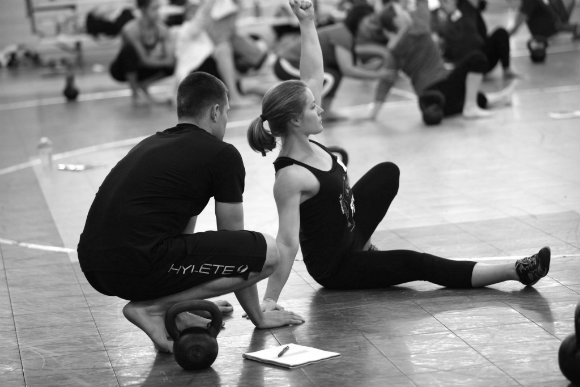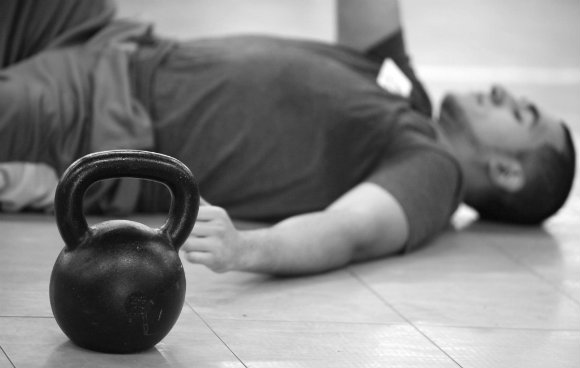A few weeks ago, I saw a post on a fitness forum from a trainer complaining about a pain in his wrist accompanied by a “snapping” sound when performing kettlebell cleans. I asked a physician associate of mine to respond to the poster. In the thread of replies, there was the normal advice you’d expect to see, and questions on the poster’s form and technique. My associate told the poster his condition sounded like classic extensor carpi ulnaris tendon snapping syndrome, a condition in which the tendon moves out of its groove and “snaps” across the bone.
It prompted me to think about how many times we as exercise professionals try to help someone — and many times ourselves —“train” their way out of a structural abnormality or dysfunction.
My Body vs. My Motorcycle
I love riding motorcycles, and I know how important it is to walk around the bike before I put on a helmet or press the starter. An under-inflated tire or loose chain could mean the difference between an exhilarating ride and a catastrophic event. No matter how experienced I am as a rider, I can’t “out-ride” a flaw in my bike’s structure, and if I try, the repercussions can be grave.
Now, I know the human body is a lot more sophisticated than a ZX12 and in many cases, the body can heal from training induced injuries, but have you ever noticed that “training around an injury” sometimes leads to the appearance of another issue? Compensatory movements, utilized so we can keep training can turn a wrist issue in to an elbow issue (like medial epicondylitis), leading to shoulder pain (that could easily be bicep tendonitis), that ends as a torn biceps tendon.
In the case of the forum poster, he applied a wrist wrap and mitigated the pain and snapping sound. In my layperson’s mind, that makes sense — the wrap restricted the tendon’s ability to move out of its groove and go “where no tendon has ever gone before.” Is this a compensatory movement? Technically, no, but if it really is extensor carpi ulnaris (ECU) subluxation, then a wrist wrap is merely a bandage and relying on that bandage could lead to something far more serious.
Keeping Our Clients Safe From Injury
A lifter discovered he could take his bench press from 450 pounds to over 600 with the aid of a lifting shirt. He failed to consider the structural limitations a 400-pound presser might face when increasing his best attempt by 40%. That failure resulted in a snapped wrist and a long recovery. Don’t assume all of your body parts are on board with your fitness goals. Just because you want to do something doesn’t mean your body is capable of coming along for the ride.
Put what we do in another light: our job as exercise professionals is to do our level best to keep our patients and clients safe and healthy as they progress toward their chosen athletic goals. Imagine you are the best at maintaining that aforementioned ZX12 and teaching its rider in his pursuit of topping 175 MPH. Now, ask yourself what your responsibility would be if there was a crack in the frame, a structural defect. If your first thought is to bring in an expert in motorcycle repair, you’re my kind of guy (or gal).
I hope my friend John is wrong. I hope the poster doesn’t have ECU tendon issues because the best courses of treatment for that defect run from six weeks in a cast (acute) to surgery (chronic). If, however, John’s correct, and the poster continues to “train around” or “through” his condition, well…
It’s always better to lift heavier than not, but it’s always smarter to be prepared.







Great article, Mark. Thank you for sharing!
Mark,
I love this article. Having over 20 years of experience as a massage therapist and Exercise scientist, I tend to err on the side of caution. Sometimes the client is the one pushing forward impatiently. It is sometimes hard to take a step back. I am continually learning. I try to impart this new information to my clients even though it makes me look like I was (wrong) previously. The new information and the new approach is the latest and greatest info I have to offer them. We are always evolving. Don’t be afraid to change. Don’t be afraid to admit you can’t help someone with an issue out of your realm. Thank you again. This article will come in handy.
David Egan, CSCS, SFGI
Hi,
As a physiotherapist in Australia, one of my main issues with people who have injuries is when they say to me”but I’m getting better, although I now am getting pain elsewhere..” . Classic problem with any injury is the ability of the body to compensate for the problem. This may not be a big issue for some, but this compensation ALWAYS leads to inefficient & ineffective motor patterns, & at some point will likely cause other secondary problems. Getting an injury properly diagonised & treated early on is the best course, to not only deal with the initial injury, but to avoid & correct any possible secondary compensation patterns emerging. You will save big bucks (& body damage) down the track. Think how elite athletes deal with injuries, don’t ignore them, just get it sorted by someone qualified & skilled asap.